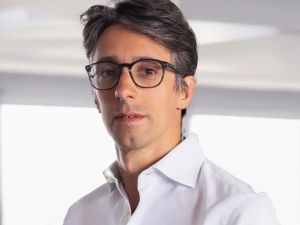As the world’s economic heavyweights pack up their business suits and disappear into the Davos snow, it’s time to digest the common themes of this year’s World Economic Forum.
Davos is the place to be at this time of year. It’s where lively discussion and debate on the hot topics of the moment take centre stage, and this year was no different.
Technology, trust and transparency was a crucial theme, and especially relevant as we head into the fourth industrial revolution at speed. Is technology allowing us to place trust in the right place or is it encouraging us to give it away too easily?
At Moneyfarm, trust is our number one priority. Whilst trust and transparency are not synonymous, transparency is crucial in allowing our customers to accurately compare products and make the right decisions with their money to achieve their financial goals.
Bitcoin versus blockchain
Bitcoin was the buzzword of the conference and if talks weren’t on the cryptocurrency, questions were crammed in at the end – that’s how eager moderators were to hear the view of such highly regarded experts on its longevity as an asset.
But as leaders point to clamping down on cryptocurrencies like bitcoin in the future, Professor Robert Shiller warned that bitcoin might not be a permanent feature in the financial world.
Founder of the Cyclically Adjusted Price Earnings (CAPE) ratio, Shiller told Davos: “[Bitcoin is] an interesting experiment, but not a permanent feature of our lives.”
Instead we should be focusing more on blockchain, which has many other applications the professor argues. There has been a lot of progress in developing the blockchain capabilities that underpins bitcoin, which could add fuel to further evolution in technology.
The CAPE ratio, or PE for short, is common used to value stocks. It looks at a company’s price versus its earnings, and this ratio is easy to compare between companies. A lower PE suggests an asset is cheaper than one with a higher PE ratio, although be careful to assume a lower PE means better value. PE ratios vary between asset classes and
Trump and some muddled numbers
Of course, Donald Trump stole the show. In fact, the media was hooked from his last-minute RSVP. The Friday lunch time slot did nothing to temper attendance, and the room was packed.
One of the only presidents to measure his success on stock market performance, Trump was keen to brag that the S&P 500 has made 84 new records under his reign. This has facilitated a 50% jump in the value of the index, which would surely have been a 50% crash had the Democrats won, he boasted – apart from the fact performance hasn’t been that strong.
A look at the S&P 500 shows that since 1 January 2016, the index has risen 25%. Impressive, yes. 50%, no.
Whilst the President muddled his numbers a bit, the latest US economic growth disappointed. The American economy grew by an annualised 2.6% rather than the 3% expected. This was down from 3.2%.
The strong American stock market performance is being driven in part by Trump’s business-friendly approach to running the country. He has cut 22 regulations for every new rule he has introduced and won over the Senate with his tax reforms.
Trump can’t take all the credit, however. The US stock market’s PE ratio grew to the world’s largest in 2013 – during former President Barak Obama’s second term.
Shiller reckons the PE ratio he founded is being supported by a global boom in share repurchases and insatiable investor desire to own a slice of the pie that’s the technology boom.
Without being able to accurately determine the cause of these record high valuations, it’s difficult to accurately identify risk – especially in an era of such low volatility levels.
Diversification can be an effective tool to manage risk in these circumstances, especially by spreading your money across geographies. If investments in one region fall, you hope it will be offset by gains made elsewhere.
The International Monetary Fund forecast improved global growth of 3.9%, which is spread across the regions.





